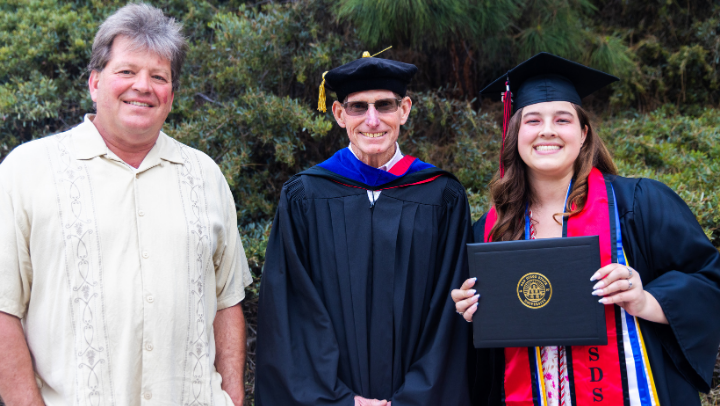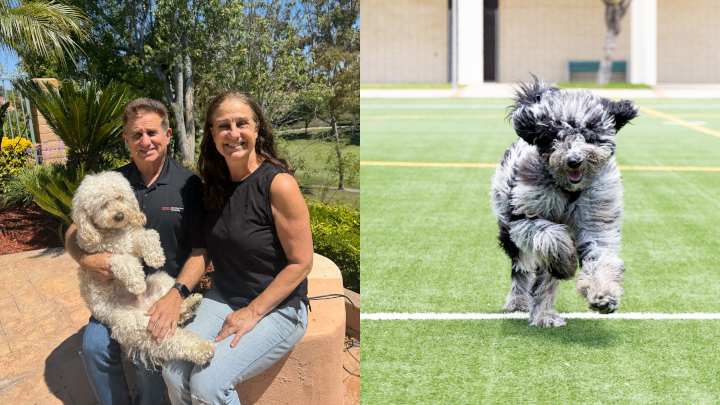Climate Data at Your Fingertips
A web tool developed by SDSU researchers offers instant access to global climate data.

While Julien Pierret was conducting research for his Ph.D. in climate data, he was playing around with a web graphics library and looking for a reason to learn about it.
“I’m a child when it comes to exploring different tools and wanted to incorporate this into my Ph.D.,” he admitted.
His exploration eventually evolved into a web-based tool – four-dimensional visual delivery or 4DVD - that offers convenient, open access to climate data for regions across the world. Intended to be used for education and research, professionals and amateurs interested in climate science can search for and view data and visuals instantly with a few clicks.
When Pierret first came up with the idea, his advisor, San Diego State University distinguished professor and climate informatics expert Samuel Shen, was initially skeptical he could create multi-dimensional views of the globe that would also include every climate variable, from temperature and precipitation to wind, relative humidity and other factors.
“But when he presented a working prototype using JavaScript that could help search up different kinds of data, I was very impressed,” Shen said.
Pierret wrote a program to pull climate data from large databases maintained by NOAA and NASA, and customized it so it could be accessed very quickly, both with vivid images similar to heat maps and graphs that showed historical trends of what is searched, be it temperature trends in South Africa or precipitation pattern shifts during an El Niño weather event.
He later added in AngularJS, a JavaScript-based web framework to improve front-end design to make the code more manageable as the project grew in scope.
“This tool makes climate data acquisition as easy as shopping on Amazon,” Shen said. “DVD players were used to play movies, this tool can ‘play’ climate scenarios.”
Indeed, with one click you can rotate the globe and zoom in on a country, state or local region and view climate trends for specific periods in time.
A learning and teaching tool
What makes 4DVD different from existing databases is that it optimally harnesses distributed computing, database technology and cloud server routing. Shen and Pierret demonstrated the difference by pulling up temperature data on existing databases. The images on those sites resemble contour plots, colorful but not easily understandable.
When they used the same search parameters on 4DVD, it pulled up a map similar to heat maps as we know it, and when any area of the globe is clicked on, it displays a graph that shows historical temperature data for that specific region. Both the digital data for the temperature history and the map can also be instantly downloaded.
“Everyone talks about global warming or climate change, but few have actually seen the climate data, because accessing it can be a technically challenging task,” Shen said.
For Pierret, the perennial explorer who completed his Ph.D. and now works in the industry, using 4DVD is fun. “One can rotate the globe, zoom in and out, and show different topographic features on earth. It is an excellent tool for learning and teaching.”
Collaborations and partnerships
Aside from the work put in by Pierret, the project received $25,000 from Amazon Web Services and is hosted on an Amazon server. Math major Isaiah Dorado, who works in Shen’s Climate Informatics Lab, helped with the project and received funding from a NOAA educational scholarship. Snehal Ilawe, part of the first cohort of students in the SDSU Big Data M.S. program, also contributed to the project.
Shen also brought in collaborators from across campus who consulted on different parts of the project. They include Eric Frost, geology professor and director of the SDSU Visualization Center; Christopher Leong, project manager for Science Technology Services; and Ricardo Fitipaldi, campus network security specialist.
Shen and Pierret are seeking partnerships with educational institutions to make the tool widely available to climate scientists, teachers and students.



